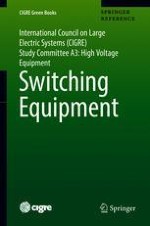Type Test Certification
Type tests are aimed to demonstrate the capability of a single sample of a batch of identical products to conform to a certain standard. Once this has been demonstrated, a type-test certificate is issued by a certification authority. A certificate contains a record of a series of type tests carried out strictly in accordance with a recognized standard. It is a proof that the component tested has fulfilled all the requirements of a recognized standard. If the equipment tested has fulfilled the requirements of this standard, the relevant ratings assigned by the manufacturer are endorsed by the certifying authority. The certificate is applicable only to equipment of a design identical to the tested one. The certifying authority is responsible for the validity and the contents of the certificate.
The responsibility for conformity of any apparatus has the same designation as the one tested rests with the manufacturer. The certificate contains the essential drawings and a description of the equipment tested.
Type tests are carried out in independent, duly accredited test laboratories. Several of these in the world apply the rules of the short-circuit testing liaison (STL), an organization of test laboratories and authorities looking after a uniform interpretation of standards throughout the world by providing practical guidelines (STL 2011a). STL, a purely technical institute, makes use of the competence and expertise of its members to provide these guidelines. This voluntary society also defines the test report templates to assure that equipment users can easily compare the results of the different member laboratories. The society also defines rules and procedures to assure the quality of the test results and certified products.
Five categories of tests are distinguished by STL to verify (STL 2011b):
-
Short-circuit making and breaking performance
-
Switching performance, normally the capacitive-current switching performance
-
Dielectric performance
-
Temperature rise performance and measurement of the main-circuit resistance
-
Mechanical performance
STL members issue certificates on these five items related to the specified rated values, except for the mechanical performance, for which there is no rating defined.
By the repetition of the type test duties after a period of time, usually after 5 years, assurance can be obtained that the manufacturing quality of the circuit breaker or switchgear, quality of material, and workmanship is maintained.
In contrast to type tests, carried out on one sample of a batch, routine tests are tests to which each individual piece of equipment is subjected. They are for the purpose of revealing faults in material and construction. They do not impair the properties and reliability of the test object.
The following subsections highlight only those test methods intended to verify the breaking capacity of circuit breakers, i.e., the capability to interrupt short-circuit currents. A detailed overview with many practical examples of all making, breaking, and switching test methods can be found in reference (Kapetanović 2011; Smeets et al. 2014a).
